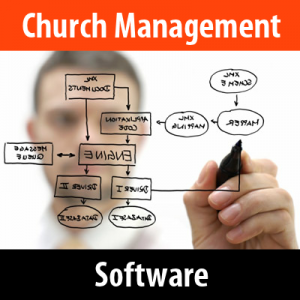In the book Blue Ocean Strategy, authors W. Chan Kim and Renee Mauborgne challenge business leaders to steer clear of the bloodbath of markets already established know as the “red ocean.” Instead, the duo pushes leaders to create new, uncharted “blue ocean” markets where opportunities exist in abudance. There are scores of examples of companies successfully charting blue oceans and one of the best is Cirque De Soleil, which is neither an opera nor a circus.
Churchteams was founded to chart a blue ocean. Mark Horan and I envisioned software that would become a service enabling churches to make disciples and build teams. Essentially, the vision was to be neither a traditional accounting-driven Church Management Software (CMS or ChMS for short), nor a consulting and content provider of discipleship resources. Our desire was to create a hybrid of both. Because of my ministry training and background, I was clear on what it takes to make disciples and build teams in churches. Mark, on the other hand, was an experienced and creative software architect. Starting with a white sheet of paper, Mark began writing code and within a year we were ready to launch. It only took a few short years before we became know as “the small group software company” and churches interested in building better small groups jumped onboard. For our first five to six years we didn’t think of ourselves as a ChMS, but rather small group software sailing a blue ocean of our own design.
Things began to evolve when small group pastors began calling us saying they wanted to keep all their data under one umbrella. In fact, some of them even left Churchteams in favor of using systems with that functionality, even if their small group components were lacking. In order for us to sustain the long haul, we navigated toward the purple waters of ChMS. As we did, we discovered that we had the distinct ability to approach ChMS from a completely different, simpler and more user-friendly perspective.
For example, when our focus was on small group software, we learned that only a small percentage of volunteer leaders would consistently login to communicate group activity. We learned a far better approach was to come alongside their daily routine of checking email. We did this by creating a simple, one click link where leaders could report their group activity, as well as send out meeting notes and prayer requests.
Another example is our membership feature. We also thought it was was logical to make member-data-maintenance as simple as one click. When members receive their data-maintenance emails, they just click one link and it takes them straight to their personal data to edit. No login, no hoops and just one click. This reduces the headache of maintaining a database. Our approach has served us well as we’ve developed into a full ChMS provider. In fact, today over 45% of the hits on our database come from volunteer, non-staff level access.
The church’s primary purpose is to make disciples. By definition this is a process of moving people forward spiritually. Therefore, process management should be at the very heart of what a ChMS does. As we tackled this problem, we realized people could be ‘grouped’ easily in the database. So we build discipleship tools using a ‘church of groups’ concept. By ‘grouping’ everyone, it’s easy to track them through the discipleship process and keeping them from falling through the cracks. This is all ‘under the hood’, which mean people are all in a data ‘group’ even if they are not physically part of a small group. In other words, you can place people in a ‘new-member’ group, a ‘waiting to be baptized’ group, a ‘first-time-givers group’, or even a ‘needs a small group’ group. You can create any type of group you can think of.
Children’s check-in, online giving and contribution management are all critical functions to maintaining a church’s integrity and fueling its mission. Technological advances in the past few years have enabled new tools and ideas to simplify children’s security through use of tablets and texting. We have leveraged these advances by using check-in stations and bar code scanners. We also offer tools to help improve stewardship through online giving, which is easy to set up and track using our digital contributions features. Furthermore, senior pastors, elders and executive leadership love the weekly contribution report they can have emailed to them.
Software cannot remain static. In fact, it must grow and change into a vibrant, life-giving tool for the church. As Churchteams church management software moves into adolescence, we are realizing that software isn’t the point all. Service is what matters most. We just happen to serve by developing powerful software that churches love to use.

